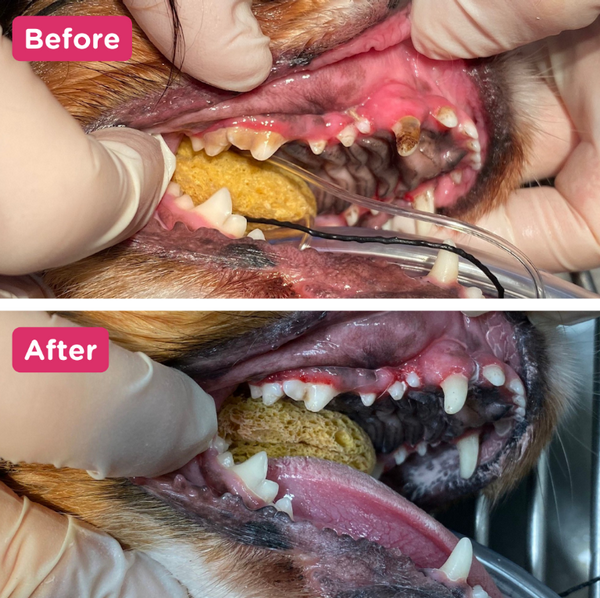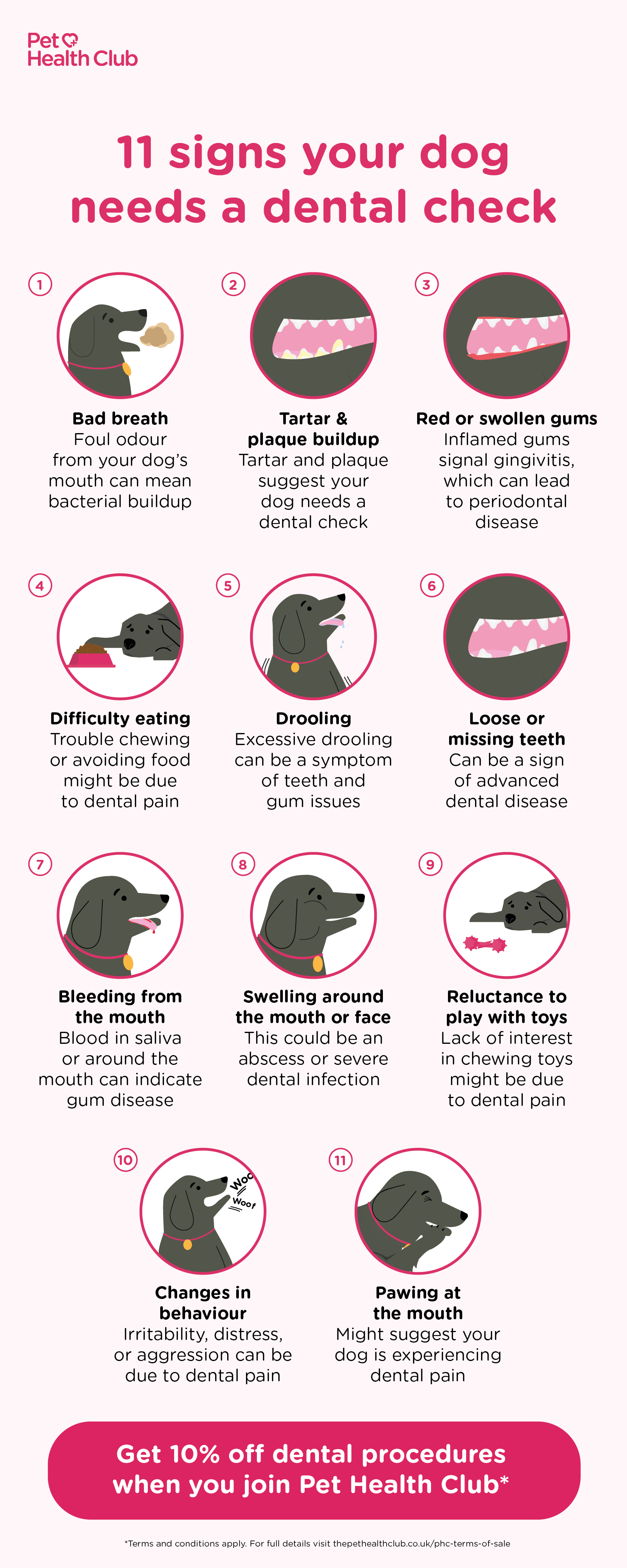Four stages of dental disease in dogs and cats
Dental disease is a common but serious condition for dogs and cats. It often goes unnoticed to begin with, but if left unchecked, it can eventually cause significant pain and health complications. Periodontal, or pet dental disease, has four stages. If you notice the signs early and take the right steps, you can stop it from causing permanent damage.
Stage 1 — Gingivitis
What does it look like?
The earliest stage of dental disease is called gingivitis, which is mild inflammation of the gums. The gum tissue at the edge of the teeth may look a little red and puffy.
What are the signs?
During this stage, signs are often subtle. You might notice a thin red line along the gums where they meet your dog or cat’s teeth. There may also be a little plaque or tartar on show. Pets might not show obvious discomfort, but bad breath (halitosis) can sometimes be an early sign that problems are afoot.
You might spot the early signs of gingivitis in dogs or gingivitis in cats during regular dental checks at home, such as lifting your pet’s lips to inspect the gum line. Just remember, it's important to have a vet check to confirm the diagnosis.
What can be done to treat or reverse gingivitis?
At this early stage, gingivitis can be reversed with proper care, including:
- Regularly brushing your pet's teeth with vet-approved toothpaste
- Getting professional dental cleanings
- Feeding your pet a healthy diet
Veterinary cleanings usually involve removing plaque and tartar by scaling and polishing the teeth.

Read more: Resources to help you keep your dog's teeth healthy
Stage 2 — Early periodontitis
What does it look like?
Inflammation and redness of the gums become more noticeable, and you might also see some swelling. This is the second of the tooth decay stages.
What are the signs?
At this stage, there’s a more obvious build-up of plaque and tartar and there may be slight bleeding when the gums are touched. Bad breath is an ongoing problem, and dental x-rays will show up to 25% of the teeth’s supporting structure has been lost. Your pet might also show signs of discomfort when eating or playing with toys that put pressure on their gums.
What can be done to treat or reverse early periodontitis?
Early periodontitis in dogs and cats needs professional veterinary cleaning to remove plaque and tartar above and below the gumline. You should also step up at-home dental care, such as:
Read more: Do's and don'ts of pet dental care
Stage 3 — Moderate periodontitis
What does it look like?
By this stage, your pet’s gums will be severely inflamed, swollen, and bleeding easily. The gums may also have started to recede, exposing the roots of the teeth.
What are the signs?
Signs of moderate periodontitis include:
- Consistent and pretty awful bad breath
- Difficulty eating and noticeable discomfort
- Changes in behaviour, such as reluctance to eat hard food or play with chew toys
- Pain when their mouth or face is touched
- Visibly swollen and bleeding gums
Dental radiographs will show 25-50% attachment loss.
What can be done to treat or reverse moderate periodontitis?
By this stage, periodontitis may be irreversible, although your vet may be able to manage the condition by doing a thorough scale and polish and extracting any severely damaged teeth. You can help by taking good care of your pet's teeth at home and making sure they see the vet regularly.
Infographic on signs your dog needs a dental check 
Read more: Expert advice to keep your cat's teeth and gums healthy
Stage 4 — Advanced periodontitis
What does it look like?
Pets with advanced periodontitis, which is a chronic bacterial infection destroying the gums, teeth and bone, will be in a lot of pain with clearly decaying, loose or even missing teeth. Their gums will look severely inflamed and unable to support what teeth they have left.
What are the signs?
At this late stage, dogs and cats might struggle to eat because of the pain they’re in. They may also drool a lot, have pus around their teeth and extremely bad breath. It’s likely x-rays will show attachment loss of more than 50%. Bacteria from the mouth could also be spreading through their bloodstream, potentially harming their kidneys, liver, and heart.
What can be done to treat or reverse advanced periodontitis?
Advanced periodontitis often requires surgical intervention, including the removal of several teeth. Post-surgical care is really important, and may involve:
- Antibiotics
- Pain management
- Maintaining strict oral hygiene
Regular follow-up appointments will be necessary to monitor your pet’s recovery and prevent further issues. Addressing this final tooth decay stage is vital for your pet's overall health.
Need more advice on dental disease?
Regular check-ups, daily at-home dental care, and professional cleanings as recommended by your vet can prevent pain and serious dental health issues. For expert advice, use our find a vet page to find your nearest vet, or speak to a vet online using our video vet service.
Prevention is always better than cure, so start taking steps today to protect your pet’s teeth. Members of Pet Health Club get 10% off dental procedures.


